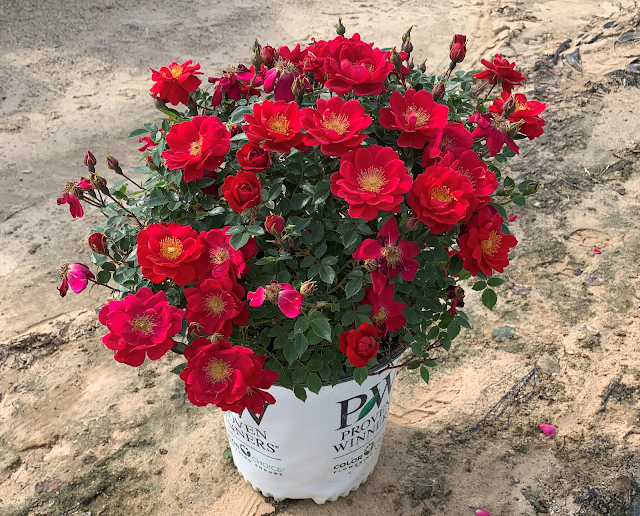I truly believe that we live in the Golden Age of technology and gardening. Just think about it. With inexpensive flight, we now have access to plants from around the world. With the formation of the European Union and the unification of plant patent laws, plant breeders can now make a living developing new plants - and we benefit from lots of new plants. With the creation of the internet, Pinterest, and e-Harmony we can connect with gardeners and plant geeks around the world. With Wikipedia, the Plant Hunter blog and GardenWeb we now have access to the most massive library of gardening information right at our finger tips. And with a wide array of garden centers, online mail order nurseries and QVC we can buy just about any plant we want with very little effort. What a great time we live in!
.jpg) |
| The Lo & Behold Series butterfly bush |
And if you're amazed at how the phone has changed in the last 20 years from the big, black Bell and Howell to the itty-bitty iPhone, consider what has happened to the big, bad butterfly bush. The once large, rangy, seedy shrub is now a cute, cuddly compact shrub sans seeds that reblooms without dead-heading.
 |
| Lo & Behold 'Blue Chip' opened up new ways to use butterfly bush |
While Steve Jobs had the vision for the iPhone, Dr. Dennis Werner had a vision for a new breed of Buddleia. His vision is Lo & Behold - a brightly colored series of dwarf butterfly bush and just like the iPhone his vision is now reality. To the casual observer the iPhone and the Lo & Behold series might seem to be overnight success stories, but both inventions took years of testing, trialing and hard work to create. Greatness takes time, but in the end it's worth the wait; both inventions are now praised by critics for their award winning low profile and superior aesthetics.
 |
| Lo & Behold now comes in white with 'Ice Chip' |
But there are also many differences between the iPhone and Lo & Behold butterfly bushes. Unlike the iPhone which has been criticized for containing dangerous chemicals, the Lo & Behold series is an environmentally friendly series of seedless selections that are non-invasive. These plants will not hurt the environment. Unlike the iPhone which is produced in China, Lo & Behold is grown locally. And instead of releasing greenhouse gases these little guys sequester carbon and emit pure oxygen. You can grow these shrubs without any guilt. It's even better for the earth than driving a Prius. Honest.
 |
| Black Knight on left, Lo & Behold seed on right |
From a health standpoint you need not worry about microwaves and the potential for brain tumors with the Lo & Behold series. Rather, it is well documented that using these and other plants have many positive health benefits.
 |
| Lo & Behold 'Purple Haze dwarf butterfly bush |
But perhaps the best thing about the Lo & Behold series compared to the iPhone is that these beautiful new plants are a much better value. These cool new butterfly bushes may cost a tad more than the old models, but they cost substantially less than the $200-$400 that an iPhone will set you back. And while the iPhone is obsolete within a few short years, these little beauties will get better with each passing year. The fragrant flowers bloom non-stop from mid-summer right up until frost without any need to dead-head the old flowers. Just give them a small charge of slow release fertilizer in the spring and they're good to go for an entire year.
 |
| There are lots of great new apps for Lo & Behold |
Many early adapters rave about all the new apps for these little shrubs. Their petite size allows you to use them in containers, around decks and even as a ground cover. Some people have reportedly used them in mixed hanging baskets. The apps are endless! And while you do not get Angry Birds with the Lo & Behold series, you and your kids will love the happy hummingbirds and beautiful butterflies that come free with every Lo & Behold purchase.
 |
| This is awesome. I need this! |
























